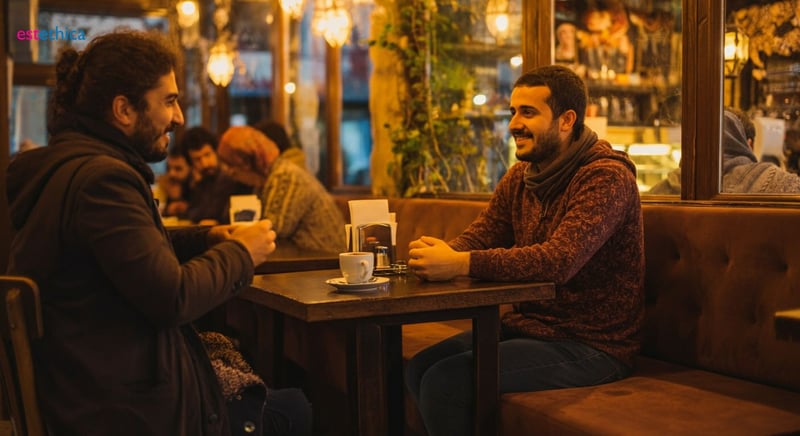Greetings Decoded: Mastering the Art of 'Hello' Worldwide
Decode the art of saying 'Hello' across cultures with insights into global greetings, etiquette, and occasions.
Greeting someone with a simple "Hello" is something that many of us do almost automatically. However, this seemingly straightforward salutation carries with it a range of cultural nuances and etiquette rules that vary significantly across the globe. In our interconnected world today, mastering the art of greeting can open doors to vibrant cultural interactions, strengthen relationships, and prevent potential cultural faux pas.
With the vast diversity of languages and traditions, the ways we say "hello" can reveal much about our societies’ values, priorities, and histories. From formal handshakes to cheerful waves, every culture has developed its own set of unwritten rules that dictate how we should greet one another, reflecting social hierarchies, respect, and hospitality.
In this guide, we'll decode the multifaceted world of greetings, exploring the wide-ranging customs—from the formal "Good day" in European countries to the casual "Hey" prevalent among younger demographics worldwide. We'll delve into how these greetings change with the seasons and the myriad ways they evolve to match different occasions.
Beyond 'Hello': Exploring the Nuances of Initial Greetings
The Art of Polite Salutations
In the realm of social graces, mastering polite salutations sets a positive tone for interactions. Beyond a simple "hello," lies a nuanced understanding of cultural norms. Selecting the right salutation involves considering the formality of the setting and your relationship with the other person. A carefully chosen greeting reflects emotional intelligence and respect, fostering stronger connections from the start. These initial exchanges are crucial.
- Formal Settings: "Good morning," "Good afternoon," or "Good evening" are impeccable choices that project professionalism.
- Informal Gatherings: A casual "Hi," "Hey," or "What's up?" can establish a friendly vibe, especially in relaxed environments.
- Cultural Sensitivity: Understanding local customs, such as using "Kon'nichiwa" in Japan or "Bonjour" in France, shows consideration for other cultures.
Deciphering Cultural Greetings with "Welcome" Gestures
Greetings vary significantly around the world, mirroring diverse cultural values. The act of "welcome" can take many forms, from a simple nod to elaborate rituals. These customs create an immediate sense of connection and understanding. Therefore, understanding these differences can avoid misunderstandings and foster stronger cross-cultural relationships. It's about showing respect and inclusivity.
- Handshakes: A firm handshake in Western cultures conveys confidence and respect.
- Bowing: In East Asia, bowing is a complex system signaling status and respect. Deeper bows indicate greater deference.
- Kissing: Cheek kissing is common in many European and Latin American countries and represents warmth and social connection.

The Etiquette of 'Welcome': Navigating Formal vs. Informal Hellos
Formal "Salutations" in Professional Contexts
Formal "greetings," particularly in business or official environments, emphasize respect and professionalism. Choosing the right "hello" sets the stage for effective communication. For example, in some cultures addressing individuals by their title and surname is customary. This protocol makes a great first impression. It respects hierarchy and establishes clear professional boundaries. Using formal "greetings" enhances credibility and strengthens relationships, reflecting a company's commitment to excellence and aesthetic wallpapers.
- Germany: Use "Herr" or "Frau" followed by the last name unless explicitly told otherwise.
- Malaysia: Address individuals with "Encik" (Mr.) or "Puan" (Mrs.) to show respect.
- Japan: Bowing slightly while saying "Konnichiwa" denotes politeness and respect.
Informal "Hellos" and Building Rapport
Informal "greetings" are important in building rapport and establishing a friendly atmosphere. Casual "hellos," such as a simple "Hey," are suitable for friends and acquaintances. The tone of informal "greetings" conveys approachability, so "welcome" can be perceived more openly. These gestures help foster a sense of camaraderie and can reflect the aesthetic photos people share. By using relaxed "greetings," individuals create social connections, especially when they reflect a shared fondness for cottagecore aesthetics.
- Casual Nod: A quick nod is a subtle way of acknowledging someone's presence without interrupting the flow of the conversation.
- Friendly Wave: A wave combined with a "Hi" can brighten up a room and let people feel more "welcome".
- "What's Up?": Using this phrase in a relaxed tone can initiate a conversation to share about aesthetics clinics and interests.

Global Salutations: A Journey Through Diverse Ways to Say 'Good Day'
The Cultural Significance of "Hello"
Around the world, 'Good Day' translates into a plethora of expressions, each charged with cultural significance. In Spain, "Buenos días" conveys warmth and optimism in daily interactions. Down under in Australia, a simple "G'day" reflects the nation's friendly and relaxed nature. This variety showcases how linguistic nuances can convey warmth and establish an immediate rapport. These nuances reflect a country's distinct values. "Greetings" are not just words; they are cultural emblems.
- New Zealand: "Kia Ora" is a Maori "hello" that expresses life and well-being, reflecting the indigenous culture's deep connection to nature.
- India: "Namaste" is often accompanied by a slight bow. This gesture symbolizes respect and recognition of the divine within another person.
- Turkey: "Merhaba," commonly used among locals, presents a harmonious aesthetic wallpapers like a warm welcome in Istanbul.
Unlocking the "Salutations" Code: What Greetings Say About a Culture
This section explores the multitude of "salutations" across languages and continents, highlighting how cultural influences and traditions shape expressions of 'Good Day'. For instance, the Arabic "As-salamu alaykum" (peace be upon you) underscores the Islamic emphasis on peace and blessings. Conversely, greetings can also hint at the social structure. In Japan, formal "greetings" differ based on the relationship and social standing which may reflect aesthetic photos. Through these diverse methods of sending "greetings," individuals connect on a deeper level, especially when incorporating local Ankara or Izmir traditions.
- Formal vs. Informal: Many cultures distinguish between formal and casual greetings. Selecting 'Good Day' depends on the setting and relationship.
- Gestures and Body Language: A bow, handshake, or hug can all be integral parts of a greeting, conveying respect, warmth, or friendship.
- Regional Variations: Even within the same language, greetings can vary by region, such as the use of "Hey" in more laid-back settings in the United States.

From 'Hey' to 'Holiday Greetings': Matching Your Hello to the Occasion
Adapting Greetings to Occasions
Various events require different forms of "greetings". During holidays, "greetings" are adapted to accommodate seasonal joy, gratitude, or celebration, such as "Merry Christmas" or "Happy Diwali." In business environments, a basic "hello" becomes a customized greeting to fit the business culture, showing professionalism and sincerity. Greetings should adapt to specific contexts, ensuring clarity, relevance and the right tone are maintained. In the spirit of aesthetics wallpapers and cottagecore aesthetics, the perfect "hello" sets the stage for every interaction. This adaptability makes every "welcome" authentic and appropriate.
- Holiday Festivities: Switching to "holiday greetings" like "Happy Thanksgiving" shows awareness and celebration of cultural events.
- Professional Engagements: Using formal language in "greetings" during conferences demonstrates respect for professional norms in aesthetics clinics.
- Informal Gatherings: Opting for casual "hellos" such as "Hey," makes social meet-ups more comfortable and warm.
Seasonal and Contextual "Salutations"
Understanding the importance of using appropriate "salutations" in diverse situations is vital. Whether it's a casual "Hey" or a formal "Good day," matching your greeting to the occasion reflects interpersonal skills. Seasonal shifts also influence "greetings," turning the familiar "hello" into festive expressions of joy for summer greetings. This adaptability makes sure you make a "welcome" that is always polite and engaging. Proper "salutations" enhance relationships and avoid misunderstandings, embracing both tradition and cultural sensitivity. Choosing the right words enhances the aesthetic photos of a moment.
- Formal Greetings: Choose greetings like "Good morning" in professional scenarios to reflect respect and professionalism.
- Informal Greetings: In casual settings, "What's up?" can help to create a friendly atmosphere and invite informal chatter.
- Festive Greetings: Adapting festive greetings reflects an understanding and appreciation in special occasions like festive greetings.
Mastering Cross-Cultural Greetings for Enhanced Global Interactions
Ensuring Respectful and Effective Patient Communication Through Tailored Greetings
Frequently Asked Questions
What is the best way to greet someone in a formal setting?
How do greetings differ across cultures, and why is it important to understand these differences?
When should I use informal greetings like "Hey" or "What's up?"
How should I adapt my greetings during holidays or special occasions?
What are some polite ways to say hello in different languages?
Discover your path to healthy beauty with personalized aesthetic solutions.
📞 Call for Your Free Consultation!